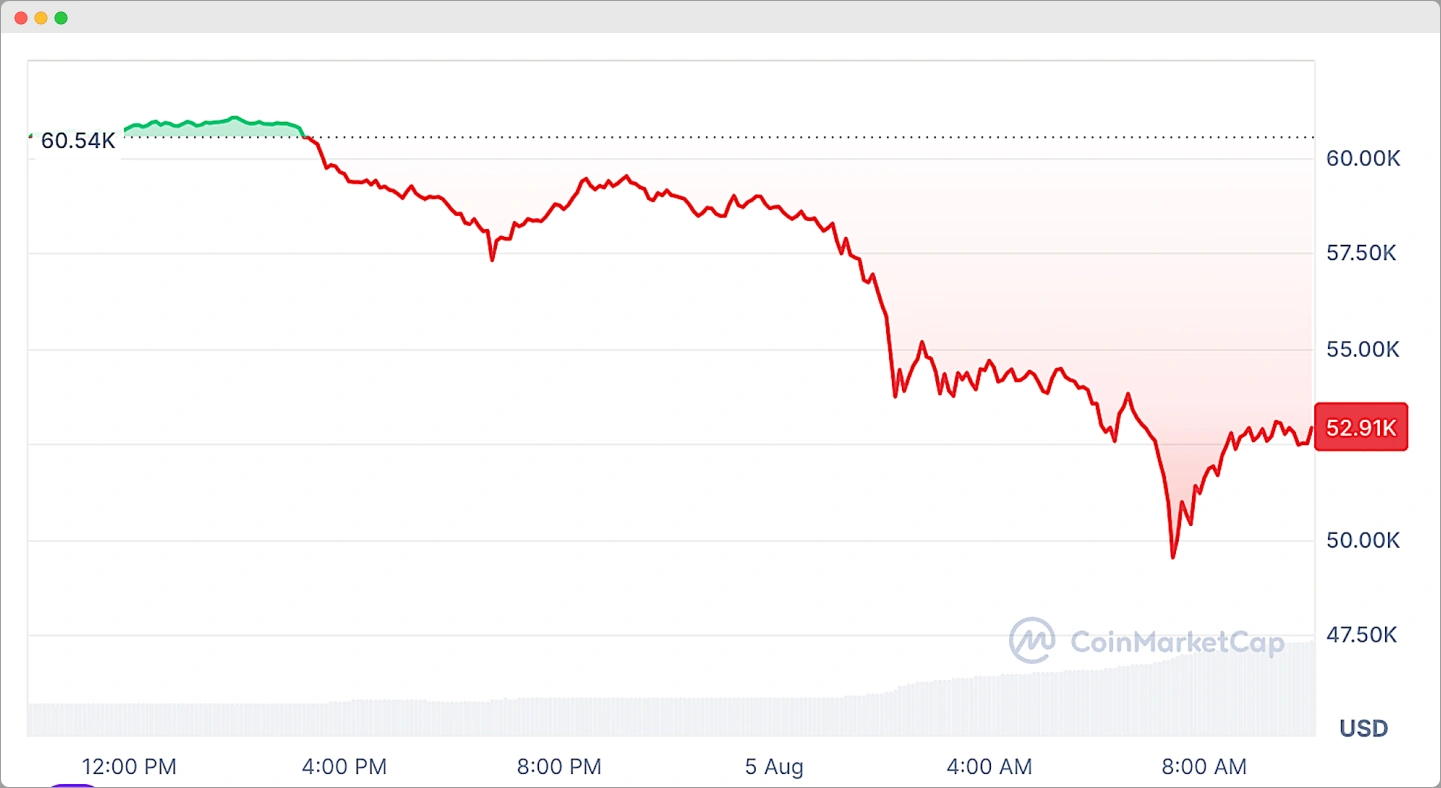How to Earn Passive Income Through Crypto
What are the best ways to generate passive income with cryptocurrency? Well, earning income through cryptocurrency requires a multi-faceted strategy. It’s like a long road.
Building passive income through cryptocurrency requires a strategic approach that balances knowledge, research, and smart decision-making.
In this article, let’s find out the revenue-generating methods like staking, yield farming, and masternodes, and the importance of smart portfolio diversification to build sustainable crypto income.
Key Takeaways:
ShowThe Basics of Earning Through Cryptocurrency
The foundation for generating revenue in the crypto space begins with a comprehensive understanding of the concept, including its associated risks and rewards.
A well-informed approach to these strategies can establish a steady, albeit occasionally unpredictable, stream of earnings.
1. How Digital Income Differs from Traditional Investments
While conventional investments (such as bonds, gold, stocks, fiat currency) offer established methods for generating income, cryptocurrencies introduce innovative, strategic opportunities.
The crypto ecosystem provides unique advantages that, when approached knowledgeably, can be both rewarding and secure. Such as:
- Staking: Earn rewards by holding and validating transactions on blockchain networks.
- Yield Farming: Provide liquidity to DeFi platforms and earn interest or tokens.
- Masternodes: Run a server to support blockchain operations and receive rewards.
- Lending: Loan crypto to earn interest.
- Crypto Savings: Deposit crypto into high-yield accounts for steady returns.
2. Weighing the Pros and Cons
Understanding the major advantages and risks of earning passive income through cryptocurrencies is a natural progression from exploring what sets this investment apart. Here are the things to consider:
- High potential returns under optimal conditions
- Risks from market volatility
- Multiple avenues to generate earnings
- The importance of understanding market trends
Essential Preparations for Starting
Before jump on crypto-based revenue generation, it is crucial to set up a secure operational foundation.
This begins with arranging reliable wallets and exchange accounts—primary tools for managing and trading digital assets.
Additionally, studying various cryptocurrencies and their market behaviors is vital for strategic, informed decision-making.
1. Setting Up Wallets and Exchanges
Your initial step is to choose robust wallets and secure exchange platforms tailored to your needs.
Assess their security features, ease of use, and compatibility with your investment goals.
Making an informed selection at the outset lays the groundwork for successful cryptocurrency operations.
Choosing the Right Tools
Research each option’s security measures, consider wallet types and exchange reputation, and evaluate their user-friendliness.
A careful selection process supports safe and efficient transactions, reinforcing your overall strategy.
Best Practices for Safeguarding Your Assets
As you expand your activities, securing your investments is paramount. Some effective steps include:
| Security Practice | Description | Benefit |
|---|---|---|
| Two-Factor Authentication | An extra security layer | Reduces risk of unauthorized access |
| Cold Storage | Offline storage solutions | Minimizes exposure to online threats |
| Regular Updates | Keeping software current | Ensures maximum protection |
| Strong Passwords | Complex and unique credentials | Prevents brute-force attacks |
| Phishing Awareness | Verifying website authenticity | Avoids fraudulent schemes |
2. Conducting Thorough Cryptocurrency Research
Evaluating projects based on market standing, team expertise, viability, and community support is essential.
This thorough analysis allows you to identify red flags such as unrealistic returns, opacity in operations, and high-pressure tactics. Staying informed is key to mitigating risks and choosing reliable projects.
Evaluating Long-Term Project Viability:
- Market Position: Understand the project’s current standing.
- Team Composition: Examine the expertise behind the project.
- Feasibility: Assess long-term sustainability.
- Community Engagement: Gauge real-world support and activity.
Spotting Red Flags and Avoiding Scams:
| Warning Sign | Indicator |
|---|---|
| Unrealistic Returns | No risk promises |
| Lack of Transparency | Obscure project goals |
| High-Pressure Tactics | Urgency to invest immediately |
Top Methods for Earning Through Cryptocurrency
Several established approaches can help you generate earnings within the crypto market. These include:
1. Staking: Supporting Networks for Rewards
Staking involves holding a cryptocurrency in a digital wallet to support network operations, validate transactions, and secure the blockchain.
Understanding both the underlying mechanism and its risk/reward profile is crucial to making an informed decision.
How Staking Works and Its Benefits
This approach offers a secure yet potentially lucrative way to earn rewards. But here a key aspects include:
- Holding assets in a designated wallet
- Participating in transaction validation
- Enhancing network stability
- Potential value appreciation of your holdings
Choosing the Right Coins for Staking
When evaluating coins to stake, consider the stability of the asset, expected returns, and the credibility of the development team.
Detailed research on market trends and staking specifics for each option supports informed decision-making.
2. Yield Farming: Maximizing Returns on DeFi Platforms
Yield farming entails maximizing returns by lending or staking your digital assets on decentralized finance platforms.
This approach requires careful selection of platforms and risk management strategies to handle inherent market fluctuations.
Platforms and Strategies for Yield Farming
Utilizing these platforms strategically can boost overall returns. Popular platforms include:
- Compound: Known for steady, reliable returns.
- Uniswap: Offers high yield with significant analysis required.
- Curve Finance: Focused on stablecoin farming.
- Yearn.Finance: Automates yield optimization.
Managing Risks in Yield Farming
Be aware of potential pitfalls such as:
| Risk | Mitigation |
|---|---|
| Smart Contract Issues | Perform rigorous audits |
| Impermanent Loss | Select pairs with low volatility |
| Regulatory Risks | Distribute holdings across jurisdictions |
| Platform Reliability | Stick to well-established providers |
| Market Fluctuations | Employ stop-loss strategies |
3. Lending: Earning Interest on Digital Assets
Crypto lending allows you to earn interest by providing your holdings to others through trusted platforms.
Research each option carefully, paying close attention to interest rates, security protocols, and the overall reliability of the service.
Evaluating Lending Platforms and Rates
A sound evaluation process will help maximize returns while keeping your investments secure. Consider:
- Diversity of platforms and variable interest rates
- The possibility of compounding returns
- Comparing terms and overall market conditions
Assessing Security and Reliability
When selecting a platform, prioritize factors such as reputation, encryption standards, regulatory compliance, and user feedback. Diversifying among verified platforms further mitigates risks.
4. Masternode: Contributing to Network Security
Running a masternode can generate earnings while simultaneously strengthening the network.
Understanding the technical and financial requirements is essential to ensure both profitability and smooth operation.
Requirements and Setup Process
Once properly established, this method can provide a consistent revenue stream alongside enhanced network security. Key prerequisites include:
- Substantial holdings in the chosen cryptocurrency
- A reliable internet connection
- Dedicated hardware
- A certain level of technical expertise
Choosing Profitable Coins for Masternodes
Focus on projects with a proven track record of stability and reward, such as Dash, PIVX, and Zcoin.
Detailed analysis of historical performance, current market trends, and future projections can guide your investment decisions.
Strategizing and Optimizing Your Crypto Portfolio

Optimizing your digital asset portfolio involves strategic diversification and continuous market monitoring.
A well-balanced strategy that incorporates staking, yield farming, lending, and masternodes can help maintain resilience during market cap’s fluctuations.
1. Building a Balanced Strategy
This balanced approach minimizes risks while maximizing overall growth. A diversified portfolio might include:
- Staking combined with yield farming
- Exploring alternative revenue streams like lending
- Regular performance reviews and strategy adjustments
Reallocating Assets for Optimal Performance
Timely adjustments—based on market trends and individual risk tolerance—are essential to keeping your portfolio robust. Strategic rebalancing supports steady growth and helps mitigate potential downturns.
2. Staying Proactive with Market Changes
Ongoing market analysis is crucial for adapting your strategy. Leverage analytical tools to track trends and adjust asset allocations dynamically, ensuring that your portfolio remains resilient despite the crypto market’s unpredictable nature.
Tools and Resources for Market Insights
Reliable resources include:
- CoinMarketCap: Real-time price monitoring
- CryptoCompare: Comprehensive market analyses
- CoinCheckup: Detailed coin research
- TradingView: Advanced charting and forecasting
These tools provide critical insights to help adjust your strategy proactively.
Responding to Market Shifts
When market conditions change, be prepared to realign your holdings based on data-driven predictions.
This agile approach not only minimizes losses but also reinforces the potential for a stable revenue stream.
Tax Implications and Regulatory Considerations

Engaging in crypto-based revenue generation comes with its share of tax responsibilities and legal considerations.
It is important to understand your obligations and keep detailed records for tax reporting, while also staying updated on regulatory changes to ensure continued compliance.
1. Understanding Your Tax Liabilities
Different jurisdictions treat crypto in varied ways—some as property, others as currency—and each method of earning can incur different tax implications.
Precise record-keeping and timely reporting are key to managing any liabilities effectively.
Variances in Taxation Across Regions
Whether earnings come from mining, trading, staking, or other avenues, the tax requirements can differ substantially.
Gaining a clear understanding of these obligations helps prevent compliance issues and potential fines.
Maintaining Compliance
Adopt meticulous record-keeping and transparent reporting practices to stay compliant with tax regulations.
This proactive approach minimizes legal risks and protects the stability of your earnings.
2. Staying Updated on Regulatory Shifts
The regulatory landscape for cryptocurrencies is continually evolving. Keeping informed about legal changes not only helps in adhering to current requirements but also aids in adapting your strategy to new rules.
Global Regulatory Trends
Key observations include:
- An increased focus on crypto-assets by regulatory bodies
- Evolving taxation approaches
- Variances in friendliness toward crypto investments across countries
- Ongoing regulatory uncertainty that necessitates vigilance
Preparing for Future Changes
A forward-thinking approach ensures that your strategy remains both profitable and compliant. Stay proactive by:
- Monitoring legal updates regularly
- Adjusting your strategy to meet new compliance standards
- Consulting with experts when necessary
Final Word
In conclusion, generating passive income through cryptocurrency demands a strategic, multi-dimensional approach that combines thorough market research, robust security measures, and continuous portfolio optimization.
Whether through staking, yield farming, lending, or running a masternode, each method offers unique opportunities as well as challenges that require careful consideration and active management.
By diversifying investments and staying informed on market trends and regulatory shifts, investors can create a resilient income stream in the volatile crypto landscape.
Ultimately, the key to long-term success lies to earn passive income through crypto are balancing innovation with risk awareness, ensuring that every step taken in the crypto space is both informed and secure.
Frequently Asked Questions (FAQs)
What Potential Risks Are Associated With Earning Passive Income Through Crypto?
Potential risks include market volatility, cybersecurity threats, regulatory changes, and liquidity issues. It’s vital to conduct thorough research, diversify investments, and seek professional advice to mitigate these risks and guarantee financial safety.
How Is Crypto Passive Income Different From Traditional Forms of Passive Income?
Crypto passive income differs from traditional forms as it leverages digital assets and technologies. It involves staking, yield farming, or lending digital currencies, which can potentially offer higher returns but with increased risk exposure.
Can I Earn Passive Income From Crypto on a Part-Time Basis?
Yes, it’s possible to earn passive income from crypto on a part-time basis. Efficient strategies like staking, lending, or investing in crypto dividends can help you generate income while mitigating risks and maintaining flexibility.
What Impact Does Market Volatility Have on My Crypto Passive Income?
Market volatility can substantially impact your crypto-based passive income. Sharp fluctuations can enhance earnings during bull markets, but may also reduce income in bearish conditions. Diversification and strategic investment can help mitigate these risks.
How Can I Ensure the Security of My Crypto Assets While Earning Passive Income?
Ensuring the security of your crypto assets involves implementing stringent safety measures. Use hardware wallets for storage, employ two-factor authentication, and choose platforms with robust security protocols for your passive income generation activities.







